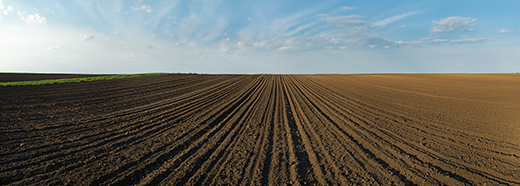Property Tax Relief for Nebraska Landowners

One of the many challenges facing Nebraska landowners are high property taxes and they continue to be a top concern, and for good reason: The Tax Foundation’s 2015 State Business Tax Climate Index ranked Nebraska 12th highest in property taxes and 26th highest in income taxes in the nation.
In fact, property taxes account for 48 percent of the total combined property, income, and sales tax collections statewide.
Perhaps this is why Nebraska Governor Pete Ricketts has made property tax relief the top priority of his administration. Ricketts has been working with Sen. Mike Gloor of Grand Island, chairman of the Legislature’s Revenue Committee, and Sen. Kate Sullivan of Cedar Rapids, Education Committee Chairwoman. The two senators are sponsoring bills—LB958 and LB959—that would tighten limits on budget growth and levy increases for all local governments, and slow the rise in government-assessed cropland values across the state—measures that Ricketts calls “tools to help local governing entities control spending.”
Last month, Governor Ricketts announced the specifics of the proposed amendment to the property tax relief bills, both of which passed first round approval in the legislature. As promised, the proposed amendments include a limit on the carryover of unused restricted funds by community colleges to 3 percent, as well as additional direct property tax relief for ag land property taxpayers.
This is welcome news to landowners across the state. Last year’s efforts by state leaders, who voted to inject $64 million a year into Nebraska’s property tax credit program, created in 2007, and which boosted the amount of state assistance for property taxes by 45 percent, was seen by many as a good start, but more relief is needed.
Looking at the specifics, the amendments would limit statewide aggregate growth in ag land valuations to 3 percent, and further tighten spending limits applying to local governments. The valuation change would trigger millions of dollars in additional state aid to school districts. Other changes would tighten spending among school districts and restrict the amount districts can carry over from year to year.
Still, landowners continue to see increases on their tax bills. Critics of the bill charge that much of these increases may be attributed to rising land values over the last decade that accompanied soaring grain prices, and not all because of local governments increasing their rates. Land values still haven’t adjusted as grain prices plummet, although they are beginning to level out.
However, it is likely that Governor Ricketts will continue to work with senators to make more structural changes in order to better balance the tax system. Despite what critics say, 51 percent of total school spending in Nebraska comes from property taxes, while the national average is only 32 percent.
In the meantime, landowners across the state will continue to push for needed relief.
“I hope to do tax reform every year,” Governor Ricketts said. “We didn’t get to be a high-tax state overnight. We’re not going to fix it overnight.”
Sources consulted: Gage, Taylor. “Gov. Ricketts, Revenue Committee Agree to Compromise on Tax Reforms.” Nebraska.gov. State of Nebraska. 17 Mar. 2016. Web. 07 Apr. 2016.
Pluhacek, Zach. “Ricketts Backs ‘Structural Change’ to Cut Growth in Property Taxes.” Lincoln Journal Star. Lincoln Journal Star. 16 Jan. 2016. Web. 07 Apr. 2016.

